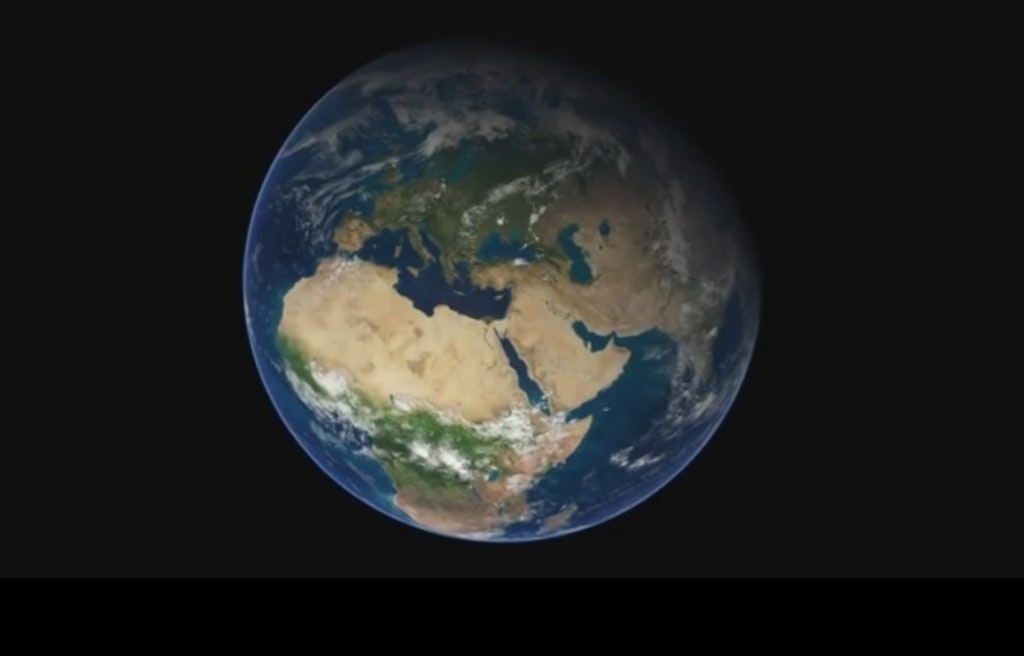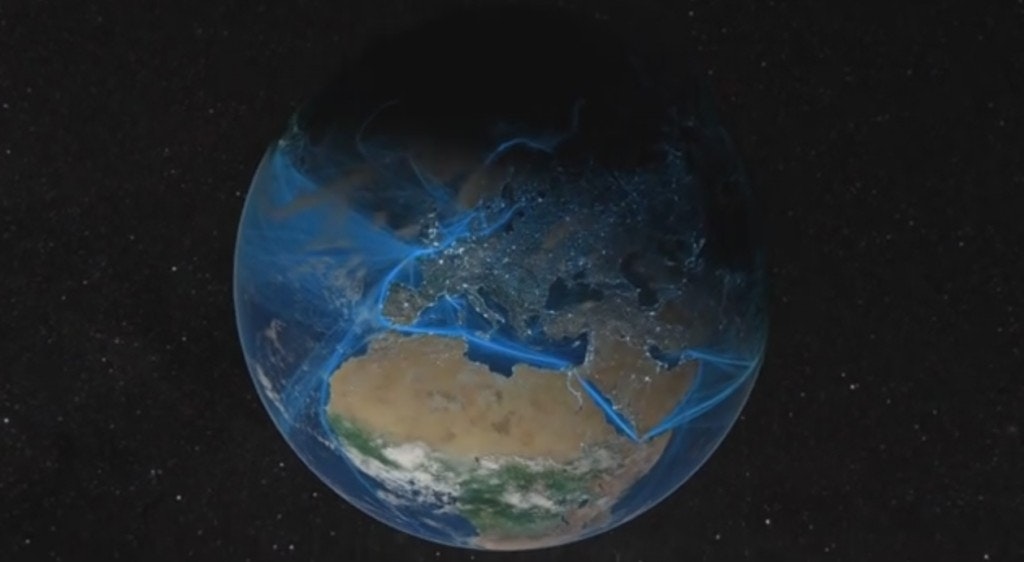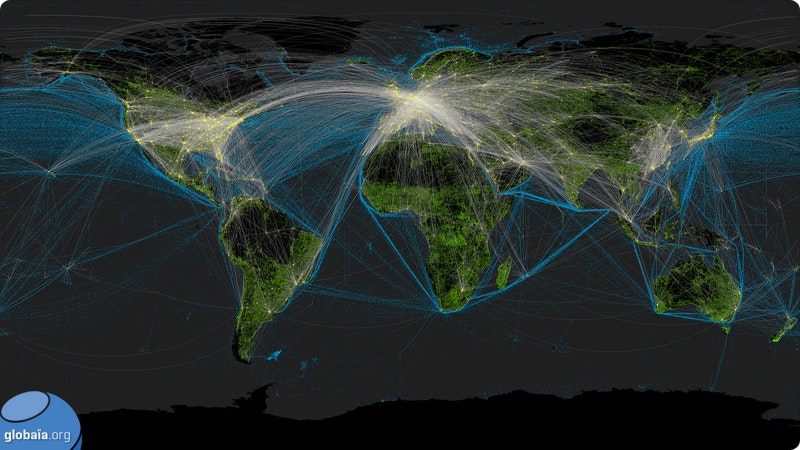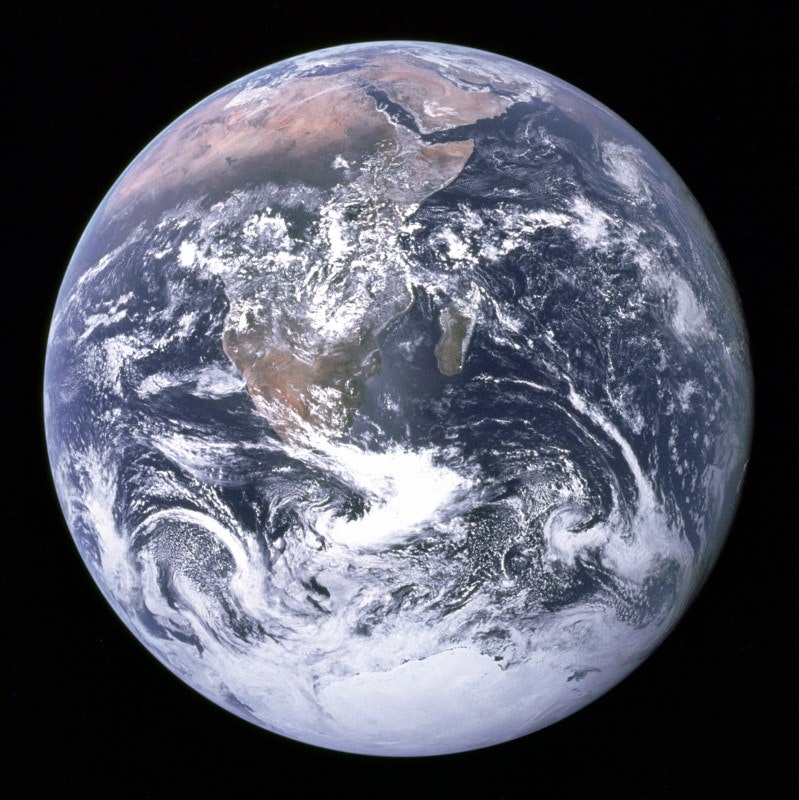Anthropocene visualizations are significant in that they often don’t employ photography as their visual medium of choice, but rather high-resolution satellite imagery that provides photographic-like pictures. That’s important insofar as—at least in relation to much scientifically-framed imagery, maps, and data graphs—we’ve moved essentially beyond photography (gauged to human perception) to remote sensing technology (scaled to global, even inter-planetary visualizations). Seemingly existing as self-evident pictures, satnav imagery resembles and is often taken for photography, but actually comprises a composite set of digitized files, the result of processed quantities of remotely sensed data collected by satellite-based sensors.4For Laura Kurgen, writing in Close Up At A Distance: Mapping, Technology & Politics (Cambridge, Mass.: Zone, 2014), we have recently undergone “a cataclysmic shift in our ability to navigate, inhabit, and define the spatial realm...brought on by: the operationalizing of Global Positioning System (GPS) satellites for both military and civilian uses in 1991; the democratization and distribution of data and imagery on the World Wide Web in 1992; the proliferation of desktop computing and the use of geographic information systems for the management of data; the privatization of commercial high-resolution satellites later in the 1990s; and widespread mapping made possible by Google Earth in 2005,” (14). In most cases regarding lay usage, these images have also already been interpreted for viewers (or rather consumers), packaged as pictures, without offering access to location data, ownership, legibility, and source information.5
http://globaia.org/portfolio/cartography-of-the-anthropocene/, however, does provide the following note on its use of data: “DATA SOURCE: Paved and Unpaved Roads, Pipelines, Railways & Transmission Lines: VMap0, National Geospatial-Intelligence Agency, September 2000. Shipping Lanes: NOAA’s SEAS BBXX database, from 14.10.2004 to 15.10.2005. Air Networks: International Civil Aviation Organization statistics. Urban Areas:
http://www.naturalearthdata.com/. Submarine Cables: Greg Mahlknecht’s Cable Map. Earth texture maps: Tom Patterson. Anthropocene Indicators: Global Change and the Earth System: A Planet Under Pressure, Steffen, W., Sanderson, A., Jäger, J., Tyson, P.D., Moore III, B., Matson, P.A., Richardson, K., Oldfield, F., Schellnhuber, H.-J., Turner II, B.L., Wasson, R.J.”







